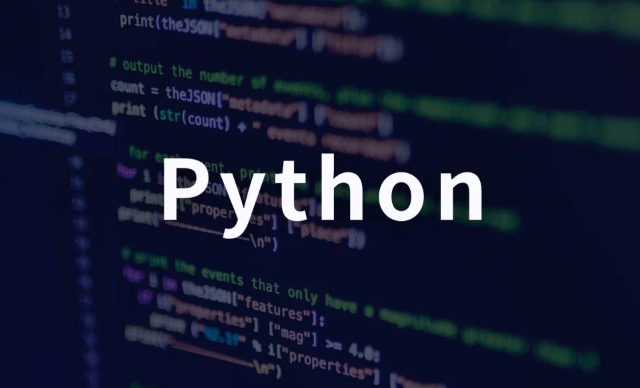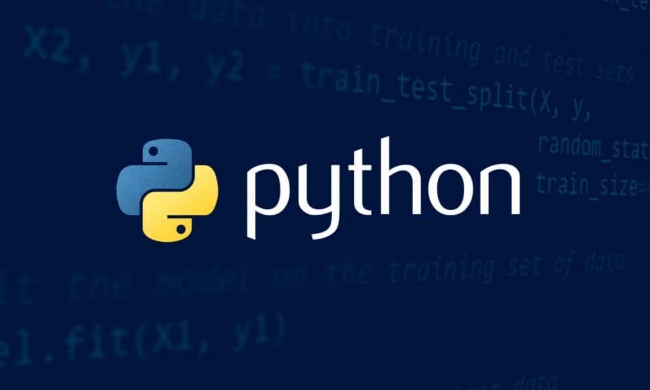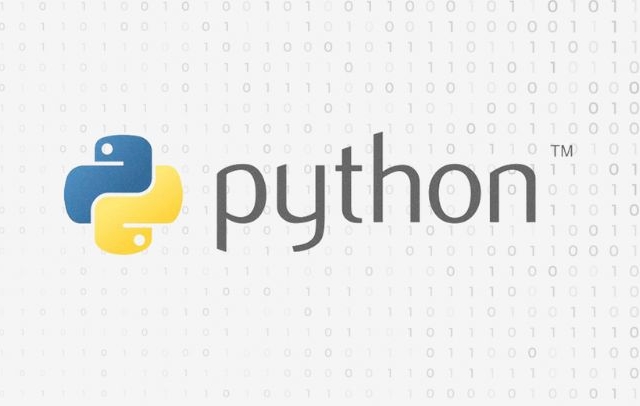Understanding Python classmethod vs staticmethod
classmethod is used to receive the class as the first parameter, suitable for factory methods and access class attributes; staticmethod does not receive automatic parameters, and is used as a tool function in the class. 1. Classmethod applicable scenarios include parsing data to generate instances, initializing objects in various ways, accessing or modifying class status; 2. Staticmethod applicable scenarios are tool functions that are independent of the class to improve readability; 3. The key difference is that classmethod can access class attributes and be suitable for inheritance, while staticmethod does not depend on classes or instances.

In Python object-oriented programming, classmethod and staticmethod are two commonly used decorators. They can both be called through classes or instances, but there are obvious differences in uses and behavior. Simply put:

-
classmethodreceives the class as the first parameter (usually namedcls), suitable for use in factory methods or scenarios where class properties need to be accessed; -
staticmethoddoes not receive automatically passed class or instance parameters, but is more like an ordinary function, just logically classified into a certain class.
1. Features and usage scenarios of classmethod
The first parameter of classmethod is the class itself (usually written as cls ). It is very suitable for defining "factory methods" - that is, methods that return class instances, not just cases that the constructor __init__ can handle.
For example:

class Person:
def __init__(self, name):
self.name = name
@classmethod
def from_full_name(cls, full_name):
first, last = full_name.split(' ')
return cls(f"{first} {last}")The benefits of doing this are:
- If you inherit
Personclass in the future, such asStudent(Person), this method will automatically create an instance ofStudent; - Clear logic, unified construction of objects through class methods, avoid duplicate code.
Applicable scenarios include:

- Analyze the data and generate class instances;
- Initialize objects in various ways;
- Class status needs to be accessed or modified.
2. Characteristics and usage scenarios of staticmethod
staticmethod is more like a "normal function" that does not automatically receive classes or instances as parameters. You can think of it as a tool function placed in a class, serving only the organization code structure.
For example, the following example:
class MathUtils:
@staticmethod
def add(a, b):
return abAt this time you will find:
- It does not depend on the state of a class or instance;
- It is just a helper function that logically belongs to this class;
- You can use class names or instances when calling, which will not affect behavior.
Recommended usage:
- Put some functions related to classes but do not operate classes or instances here;
- Improve code readability and avoid scattering these functions everywhere;
- Do not access
clsorselfin this method, otherwiseclassmethodor normal method should be used.
3. Summary of the key differences between classmethod vs staticmethod
| characteristic | classmethod | staticmethod |
|---|---|---|
| The first parameter | Class (cls) | No automatic parameters |
| Is it possible to access class attributes | ✅ Yes | ❌ Not directly supported |
| Is it suitable for inheritance | ✅ What is passed in when subclass calls is the subclass itself | ❌ Not perceived the current class |
| Whether to modify class behavior | ✅ Commonly used in class creation process | ❌ Generally, no class logic is involved |
So when to choose which one?
- If your method needs to change the creation logic of the class itself, or rely on the information of the class, use
classmethod; - If your method is just "hang" under this class and does not depend on the class or instance, use
staticmethod.
Basically that's it. Only by understanding the differences between the two can you write clearer and easier to maintain object-oriented code.
The above is the detailed content of Understanding Python classmethod vs staticmethod. For more information, please follow other related articles on the PHP Chinese website!

Hot AI Tools

Undress AI Tool
Undress images for free

Undresser.AI Undress
AI-powered app for creating realistic nude photos

AI Clothes Remover
Online AI tool for removing clothes from photos.

Clothoff.io
AI clothes remover

Video Face Swap
Swap faces in any video effortlessly with our completely free AI face swap tool!

Hot Article

Hot Tools

Notepad++7.3.1
Easy-to-use and free code editor

SublimeText3 Chinese version
Chinese version, very easy to use

Zend Studio 13.0.1
Powerful PHP integrated development environment

Dreamweaver CS6
Visual web development tools

SublimeText3 Mac version
God-level code editing software (SublimeText3)
 How to handle API authentication in Python
Jul 13, 2025 am 02:22 AM
How to handle API authentication in Python
Jul 13, 2025 am 02:22 AM
The key to dealing with API authentication is to understand and use the authentication method correctly. 1. APIKey is the simplest authentication method, usually placed in the request header or URL parameters; 2. BasicAuth uses username and password for Base64 encoding transmission, which is suitable for internal systems; 3. OAuth2 needs to obtain the token first through client_id and client_secret, and then bring the BearerToken in the request header; 4. In order to deal with the token expiration, the token management class can be encapsulated and automatically refreshed the token; in short, selecting the appropriate method according to the document and safely storing the key information is the key.
 How to test an API with Python
Jul 12, 2025 am 02:47 AM
How to test an API with Python
Jul 12, 2025 am 02:47 AM
To test the API, you need to use Python's Requests library. The steps are to install the library, send requests, verify responses, set timeouts and retry. First, install the library through pipinstallrequests; then use requests.get() or requests.post() and other methods to send GET or POST requests; then check response.status_code and response.json() to ensure that the return result is in compliance with expectations; finally, add timeout parameters to set the timeout time, and combine the retrying library to achieve automatic retry to enhance stability.
 Python FastAPI tutorial
Jul 12, 2025 am 02:42 AM
Python FastAPI tutorial
Jul 12, 2025 am 02:42 AM
To create modern and efficient APIs using Python, FastAPI is recommended; it is based on standard Python type prompts and can automatically generate documents, with excellent performance. After installing FastAPI and ASGI server uvicorn, you can write interface code. By defining routes, writing processing functions, and returning data, APIs can be quickly built. FastAPI supports a variety of HTTP methods and provides automatically generated SwaggerUI and ReDoc documentation systems. URL parameters can be captured through path definition, while query parameters can be implemented by setting default values for function parameters. The rational use of Pydantic models can help improve development efficiency and accuracy.
 Python variable scope in functions
Jul 12, 2025 am 02:49 AM
Python variable scope in functions
Jul 12, 2025 am 02:49 AM
In Python, variables defined inside a function are local variables and are only valid within the function; externally defined are global variables that can be read anywhere. 1. Local variables are destroyed as the function is executed; 2. The function can access global variables but cannot be modified directly, so the global keyword is required; 3. If you want to modify outer function variables in nested functions, you need to use the nonlocal keyword; 4. Variables with the same name do not affect each other in different scopes; 5. Global must be declared when modifying global variables, otherwise UnboundLocalError error will be raised. Understanding these rules helps avoid bugs and write more reliable functions.
 Access nested JSON object in Python
Jul 11, 2025 am 02:36 AM
Access nested JSON object in Python
Jul 11, 2025 am 02:36 AM
The way to access nested JSON objects in Python is to first clarify the structure and then index layer by layer. First, confirm the hierarchical relationship of JSON, such as a dictionary nested dictionary or list; then use dictionary keys and list index to access layer by layer, such as data "details"["zip"] to obtain zip encoding, data "details"[0] to obtain the first hobby; to avoid KeyError and IndexError, the default value can be set by the .get() method, or the encapsulation function safe_get can be used to achieve secure access; for complex structures, recursively search or use third-party libraries such as jmespath to handle.
 How to parse an HTML table with Python and Pandas
Jul 10, 2025 pm 01:39 PM
How to parse an HTML table with Python and Pandas
Jul 10, 2025 pm 01:39 PM
Yes, you can parse HTML tables using Python and Pandas. First, use the pandas.read_html() function to extract the table, which can parse HTML elements in a web page or string into a DataFrame list; then, if the table has no clear column title, it can be fixed by specifying the header parameters or manually setting the .columns attribute; for complex pages, you can combine the requests library to obtain HTML content or use BeautifulSoup to locate specific tables; pay attention to common pitfalls such as JavaScript rendering, encoding problems, and multi-table recognition.
 Python def vs lambda deep dive
Jul 10, 2025 pm 01:45 PM
Python def vs lambda deep dive
Jul 10, 2025 pm 01:45 PM
def is suitable for complex functions, supports multiple lines, document strings and nesting; lambda is suitable for simple anonymous functions and is often used in scenarios where functions are passed by parameters. The situation of selecting def: ① The function body has multiple lines; ② Document description is required; ③ Called multiple places. When choosing a lambda: ① One-time use; ② No name or document required; ③ Simple logic. Note that lambda delay binding variables may throw errors and do not support default parameters, generators, or asynchronous. In actual applications, flexibly choose according to needs and give priority to clarity.
 Can a Python class have multiple constructors?
Jul 15, 2025 am 02:54 AM
Can a Python class have multiple constructors?
Jul 15, 2025 am 02:54 AM
Yes,aPythonclasscanhavemultipleconstructorsthroughalternativetechniques.1.Usedefaultargumentsinthe__init__methodtoallowflexibleinitializationwithvaryingnumbersofparameters.2.Defineclassmethodsasalternativeconstructorsforclearerandscalableobjectcreati







